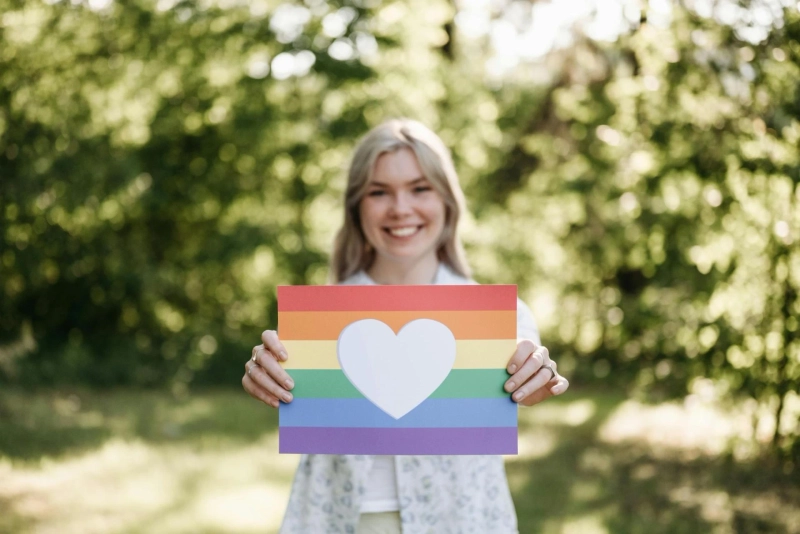LGBTQ organizations play a crucial role in fostering safe and supportive spaces for diverse identities. However, non-binary individuals—those who do not exclusively identify as male or female—often find themselves overlooked, even within LGBTQ communities. For organizations that strive to be inclusive, it is essential to go beyond general LGBTQ advocacy and actively embrace non-binary identities in policies, programs, and messaging.
In this article, we’ll explore practical ways LGBTQ organizations can better support non-binary people, including youth advocacy efforts, content creation strategies, and gender-inclusive initiatives.

1. Understanding Non-Binary Identities
Before fostering inclusivity, it is essential to understand what being non-binary means. Non-binary people identify outside the traditional male-female gender binary. Some may identify as genderfluid, agender, or have a different experience of gender entirely. While non-binary people are often included under the transgender umbrella, not all identify as transgender.
By educating staff, volunteers, and community members about non-binary identities, LGBTQ organizations can build a more inclusive environment that validates and supports diverse gender expressions.
2. Using Gender-Inclusive Language
Language plays a vital role in creating inclusive spaces. Organizations should adopt gender-inclusive language in all communications, policies, and materials. Here are some best practices:
- Use gender-neutral pronouns – Encourage the use of “they/them” and other gender-neutral pronouns. Provide opportunities for individuals to share their pronouns in meetings, events, and online profiles.
- Avoid gendered greetings – Replace “ladies and gentlemen” with “everyone” or “folks” to ensure non-binary individuals feel acknowledged.
- Update forms and documents – Instead of binary gender options, offer multiple choices or an open field where individuals can describe their identity in their own words.
3. Creating Non-Binary Inclusive Spaces
Physical and digital spaces should reflect inclusivity. LGBTQ organizations can make their environments more welcoming by:
- Providing gender-neutral restrooms – Ensure that all facilities have accessible, all-gender restrooms to accommodate non-binary individuals.
- Implementing inclusive dress codes – Avoid enforcing binary dress codes and allow participants to express themselves authentically.
- Displaying visible support – Use signage, posters, and online messaging that explicitly mention non-binary people as part of the LGBTQ community.
4. Centering Non-Binary Voices in Content Creation
Content creation is a powerful tool for representation. LGBTQ organizations should ensure non-binary voices are highlighted in their blogs, social media posts, videos, and marketing campaigns. Here’s how:
- Feature non-binary individuals in storytelling – Share experiences of non-binary people to raise awareness and normalize their presence.
- Use inclusive imagery – Stock photos, website graphics, and event promotions should reflect gender diversity.
- Avoid stereotypes – Non-binary people have diverse expressions and experiences. Avoid limiting representation to a single aesthetic or narrative.
5. Advocating for Non-Binary Youth
Youth advocacy is essential in ensuring that young non-binary individuals have access to resources, education, and support. LGBTQ organizations can enhance their advocacy efforts by:
- Providing mentorship programs – Connect non-binary youth with role models who understand their experiences.
- Collaborating with schools – Work with educators to implement gender-inclusive policies and prevent discrimination.
- Offering mental health resources – Many non-binary youth face mental health challenges due to societal pressures. Providing affirming counseling and support groups can make a significant difference.
6. Revising Policies to Include Non-Binary Identities
Many LGBTQ organizations already have non-discrimination policies, but they may need updates to be explicitly inclusive of non-binary people. Consider revising policies to:
- Recognize non-binary identities in membership guidelines
- Ensure equal opportunities for non-binary individuals in leadership roles
- Address non-binary inclusion in workplace and community guidelines

7. Encouraging Allyship Among LGBTQ Supporters
LGBTQ supporters, including allies and community members, should actively participate in non-binary inclusion efforts. Organizations can help by:
- Providing allyship training – Educate allies on how to respect and affirm non-binary identities.
- Encouraging pronoun awareness – Promote the normalization of sharing pronouns to create a more inclusive culture.
- Amplifying non-binary voices – Give non-binary individuals platforms to share their experiences and lead initiatives.
Conclusion
For LGBTQ organizations to be truly inclusive, they must intentionally support non-binary individuals in every aspect of their work—from language and policies to youth advocacy and content creation. By making these necessary changes, organizations can foster safer, more affirming spaces for all gender identities.
As a next step, consider assessing your organization’s inclusivity efforts and implementing one new initiative to better support non-binary people. If you have experiences or insights on this topic, share them in the comments or join the conversation on Liberate Star to continue advocating for equality.



